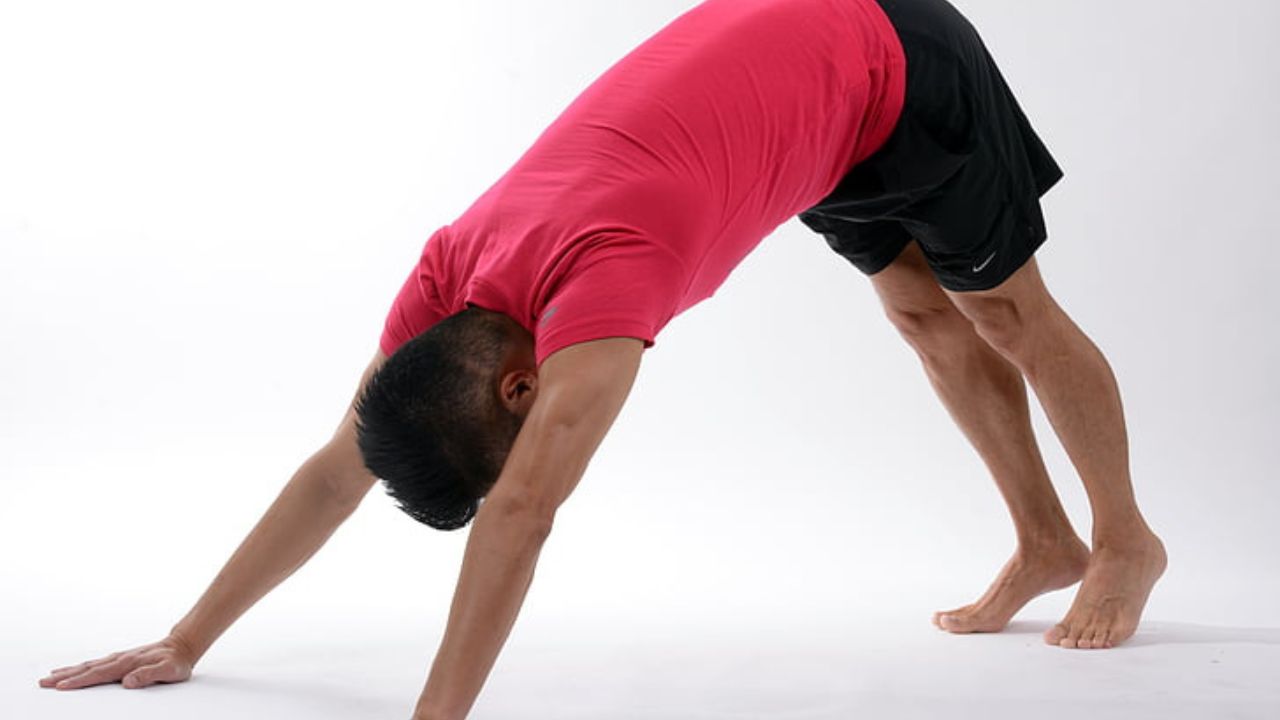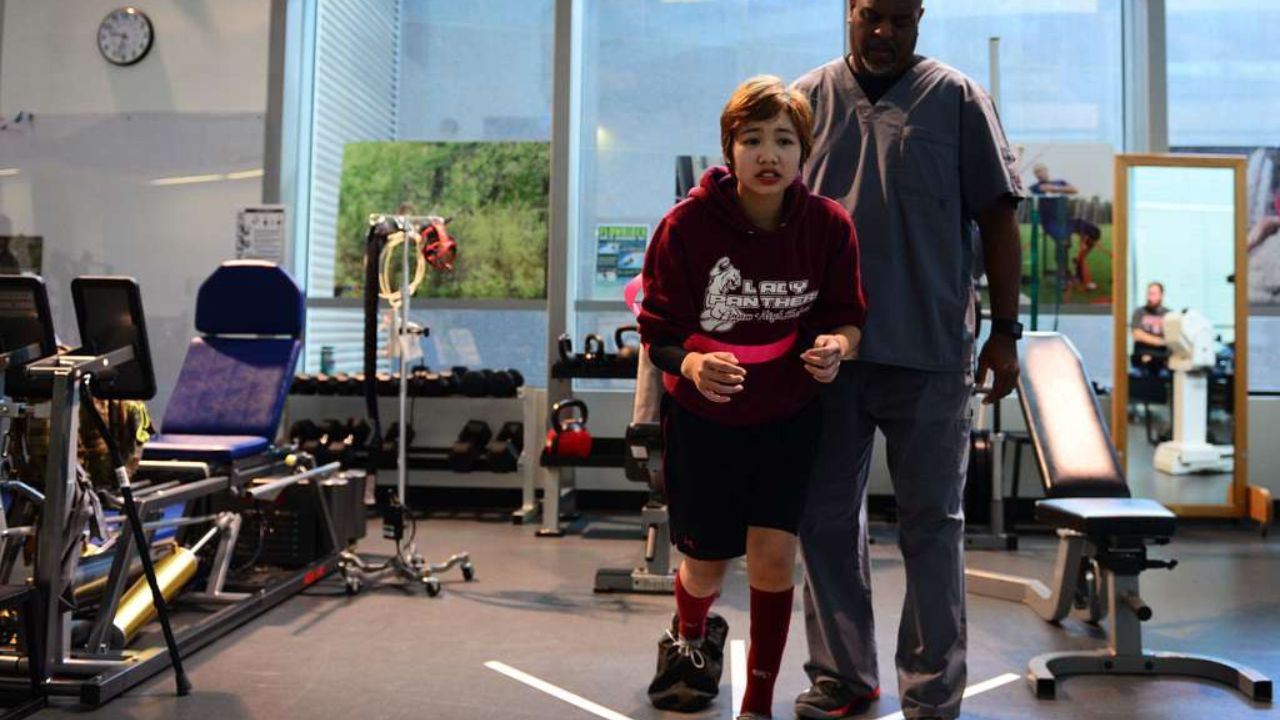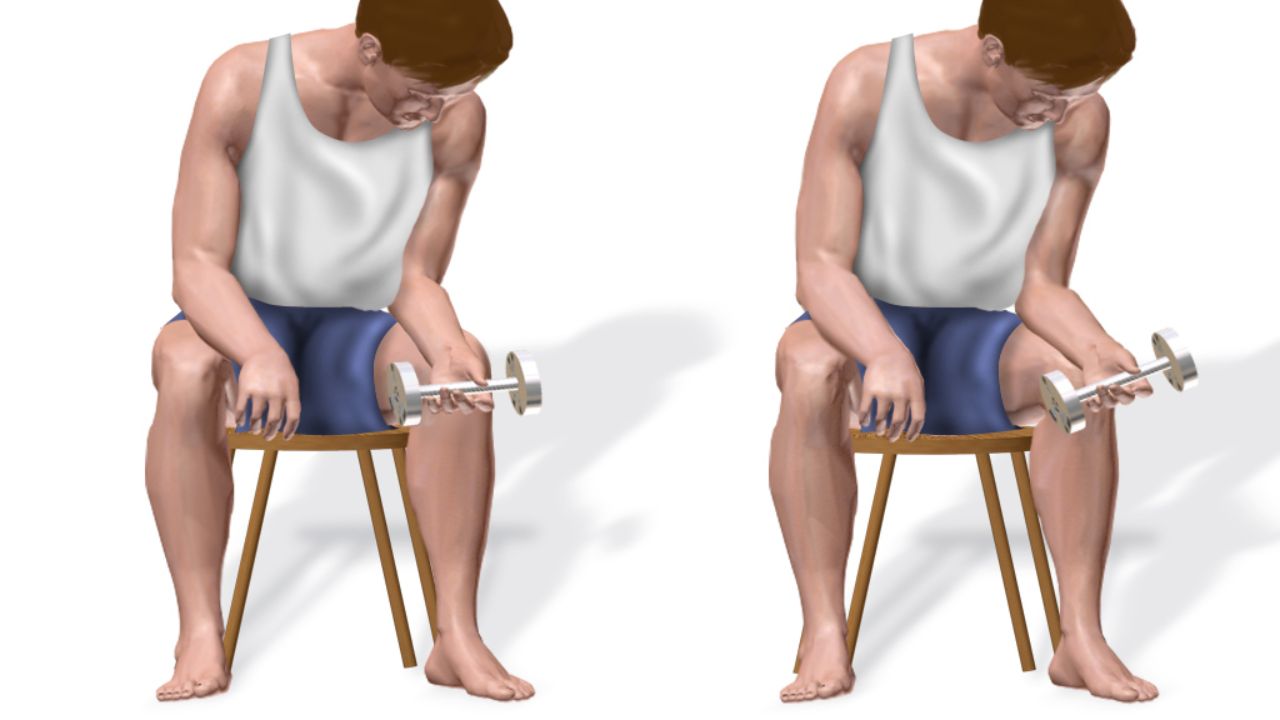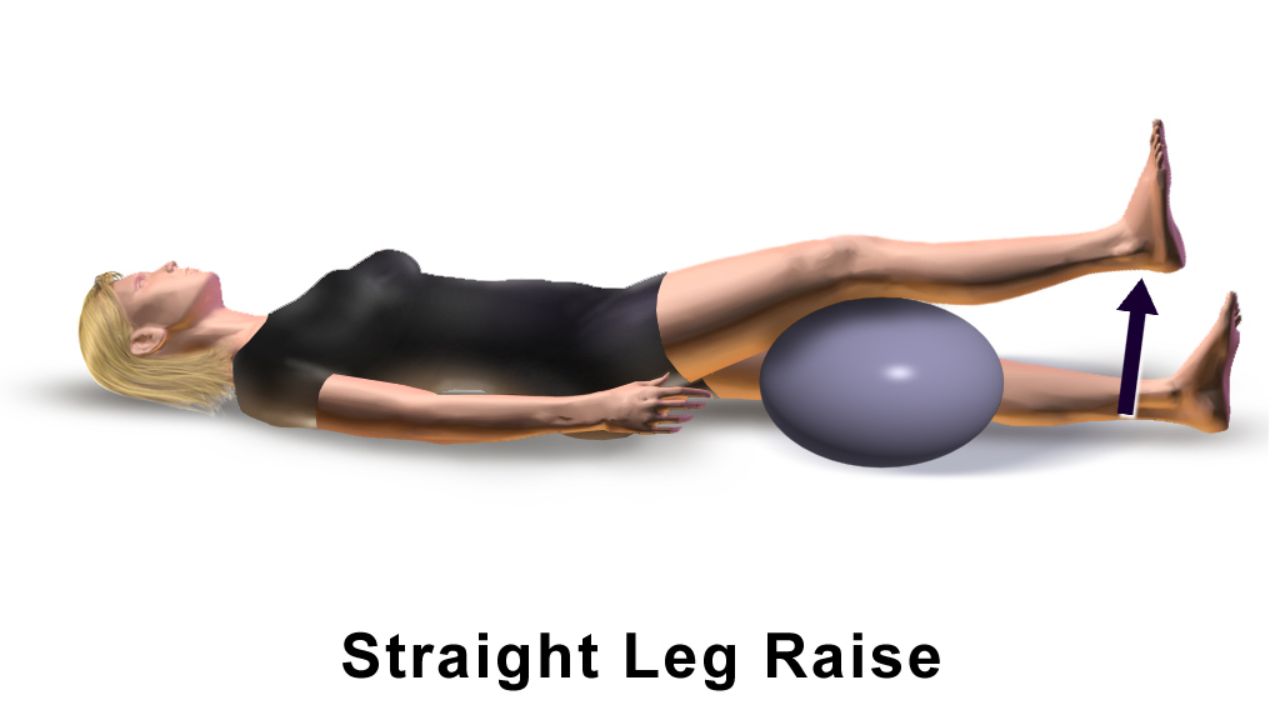
Are you looking to optimize your workout routine and achieve maximum results? Look no further.
In this article, we will explore the top 10 muscle recovery techniques that can help you boost your workout performance. From incorporating stretching and flexibility exercises to trying out compression gear, we will provide you with expert advice on how to redefine your routine and achieve faster muscle recovery.
Get ready to take your fitness journey to the next level.
Incorporating Stretching and Flexibility Exercises
A comprehensive workout routine should include a variety of stretching and flexibility exercises to enhance muscle recovery and prevent injuries. Stretching techniques and flexibility exercises help to improve joint mobility and increase the range of motion in the muscles.
By incorporating these exercises into your routine, you can reduce muscle soreness and stiffness after intense workouts. Stretching also promotes blood flow to the muscles, which aids in the delivery of oxygen and nutrients necessary for muscle repair.
It is essential to perform dynamic stretches before a workout to warm up the muscles and static stretches after the workout to cool down and relax the muscles. Additionally, incorporating yoga or Pilates into your routine can further improve flexibility and balance.
Using Cold Therapy for Muscle Recovery
Cold therapy, such as ice baths or cold compresses, can effectively reduce inflammation and promote muscle recovery after intense workouts. Incorporating cold therapy techniques into your post-workout routine can provide numerous benefits for your muscles and overall recovery.

Here are some of the cold therapy benefits and techniques:
Decreased inflammation: Cold therapy constricts blood vessels, reducing blood flow to the affected area and minimizing inflammation.
Reduced muscle soreness: Cold therapy helps to numb nerve endings, providing temporary relief from muscle soreness.
Faster recovery: By reducing inflammation and muscle soreness, cold therapy can help speed up the recovery process and allow you to get back to your workouts sooner.
Improved performance: Cold therapy can enhance your performance by reducing fatigue and allowing your muscles to recover more efficiently.
Increased flexibility: Cold therapy can help improve flexibility by reducing muscle stiffness and promoting better range of motion.
Incorporating cold therapy techniques into your muscle recovery routine can be a valuable tool in optimizing your workouts and achieving your fitness goals.

Implementing Active Recovery Techniques
By incorporating dynamic stretching before and after workouts, athletes can effectively implement active recovery techniques to enhance muscle flexibility and reduce the risk of injury.
Dynamic stretching involves moving parts of your body through a full range of motion, mimicking the movements of your upcoming workout or sport. This type of stretching not only increases blood flow and oxygen to the muscles, but it also helps to activate the muscles and improve their elasticity.
By incorporating dynamic stretching into your routine, you can improve your overall performance and prevent muscle imbalances and strains.
Additionally, dynamic stretching can help to alleviate muscle soreness and stiffness, allowing for a quicker recovery and faster return to training.
Exploring the Benefits of Massage Therapy
Massage therapy has been recognized as an effective method for muscle recovery and improving athletic performance. It provides numerous benefits such as reducing muscle soreness, increasing blood circulation, and promoting relaxation.
With its ability to target specific muscle groups and alleviate tension, massage therapy can play a crucial role in enhancing overall physical well-being.
Massage for Muscle Recovery
One effective technique for muscle recovery is incorporating regular deep tissue massages into your post-workout routine, as they have been shown to improve muscle soreness and enhance overall recovery. Deep tissue massages target the deeper layers of muscles and connective tissues, helping to relieve tension and promote muscle relaxation.

Here are five benefits of incorporating deep tissue massages into your muscle recovery routine:
- Increased blood circulation to the muscles, which helps to remove waste products and deliver nutrients more efficiently.
- Reduced muscle tension and stiffness, allowing for greater flexibility and range of motion.
- Decreased inflammation and swelling in the muscles, promoting faster recovery and reducing the risk of injury.
- Improved lymphatic drainage, helping to flush out toxins and promote a healthy immune system.
- Enhanced relaxation and stress relief, which can improve overall well-being and mental clarity.
Exploring the benefits of massage therapy in improving athletic performance involves understanding how it enhances muscle recovery and promotes optimal physical functioning.
Massage therapy is a valuable tool for athletes looking to improve their endurance and overall performance. By increasing blood flow to the muscles, massage therapy helps deliver oxygen and nutrients to the tissues, aiding in the repair process and reducing the risk of injury.
Additionally, massage therapy can help release tension and tightness in the muscles, allowing for greater range of motion and flexibility. This can lead to improved athletic performance and enhanced overall physical functioning.
Incorporating massage therapy into a regular training regimen, along with other muscle recovery techniques, can help athletes maximize their potential and achieve their performance goals.
Trying Out Compression Gear for Faster Recovery
Compression gear has gained popularity among athletes and fitness enthusiasts as a potential tool for faster recovery.
The tight-fitting clothing applies pressure to the muscles, which is believed to increase blood flow and reduce muscle soreness.

However, the effectiveness of compression gear in enhancing recovery is still a subject of debate among experts.
Compression Gear Benefits
The benefits of wearing compression gear for faster muscle recovery are well-documented in various studies. Compression gear, such as compression sleeves, tights, and socks, have gained popularity among athletes and fitness enthusiasts due to their effectiveness in aiding muscle recovery.
Here are some key benefits of using compression gear:
Enhanced blood circulation: Compression gear applies pressure to the muscles, promoting better blood flow and oxygen delivery, which helps in reducing muscle fatigue and soreness.
Reduced muscle vibration: Compression gear reduces muscle oscillation during exercise, which can lead to decreased muscle damage and prevention of muscle strains.
Increased muscle support: The compression provided by these garments helps stabilize the muscles and joints, reducing the risk of injury.
Faster removal of metabolic waste: Compression gear assists in the removal of metabolic waste products like lactic acid, which can accumulate during intense workouts and delay muscle recovery.

Improved proprioception: Compression gear provides a snug fit, enhancing proprioception or the body's awareness of its position and movement, leading to improved performance and reduced injury risk.
Does Compression Gear Work?
Furthermore, it is important to evaluate the efficacy of compression gear in facilitating faster muscle recovery and determining its impact on athletic performance. Research on compression gear effectiveness has provided some promising results.
Compression garments are designed to apply pressure to specific muscle groups, enhancing blood flow and reducing muscle soreness. This increased blood flow helps to deliver oxygen and nutrients to the muscles, promoting faster recovery and reducing the risk of injury.
Additionally, compression gear can provide support to the muscles and joints, improving stability and proprioception during physical activity. However, it is worth noting that the effectiveness of compression gear may vary among individuals and sports activities.
Further research is needed to fully understand the mechanisms behind compression gear and its impact on athletic performance.
Understanding the Importance of Proper Nutrition
To optimize your muscle recovery and boost your workout performance, it is essential to understand the role of proper nutrition in fueling and nourishing your body. Proper nutrition plays a crucial role in muscle repair and growth, as well as in providing the energy needed to perform at your best. Here are five key factors to consider when it comes to proper nutrition for muscle repair:
Sufficient protein intake: Protein is essential for muscle repair and growth. Aim to consume an adequate amount of protein from sources such as lean meats, eggs, dairy products, and plant-based proteins.

Carbohydrate consumption: Carbohydrates are the body's primary source of energy. Including complex carbohydrates in your diet can provide sustained energy for your workouts and aid in muscle repair.
Hydration: Staying hydrated is crucial for optimal muscle recovery. Water helps transport nutrients to your muscles and aids in the removal of waste products.
Antioxidant-rich foods: Antioxidants help reduce inflammation and oxidative stress in the body. Include fruits, vegetables, and other antioxidant-rich foods in your diet for enhanced muscle recovery.
Proper timing: Consuming the right nutrients at the right time can optimize muscle repair. Eating a balanced meal or snack containing protein and carbohydrates within 30 minutes to an hour after your workout can aid in recovery.
Understanding the importance of proper nutrition in muscle repair can greatly improve your workout performance and overall fitness goals. By fueling your body with the right nutrients, you can optimize your muscle recovery and experience better results from your workouts.
Utilizing Heat Therapy to Ease Muscle Tension
Heat therapy is a widely used technique to alleviate muscle tension and promote relaxation. By applying heat to the affected area, blood flow increases, allowing muscles to loosen up and release tension.
This can be achieved through various methods such as hot packs, warm baths, or heating pads.

Hot Vs. Cold Therapy
One of the key considerations when it comes to muscle recovery techniques is the optimal timing for utilizing hot vs. cold therapy methods. Both hot and cold therapy have their own unique benefits and can be effective in promoting muscle recovery.
Here is a comparison of hot therapy benefits and cold therapy techniques:
Hot therapy benefits:
Increases blood flow to the muscles, promoting nutrient delivery and waste removal.
Relaxes muscles and reduces muscle stiffness and tension.
Eases joint pain and improves flexibility.
Can be used before a workout to warm up the muscles and enhance performance.

Can be used after a workout to promote muscle relaxation and recovery.
Cold therapy techniques:
Reduces inflammation and swelling in injured or overworked muscles.
Helps numb pain and provides temporary relief from muscle soreness.
Slows down blood flow to the muscles, reducing swelling and preventing further damage.
Can be used immediately after an intense workout or injury to minimize tissue damage.
Can be used intermittently in the recovery process to manage pain and inflammation.

Incorporating both hot and cold therapy techniques into your muscle recovery routine can provide a balanced approach to promoting healing and preventing muscle damage. It is important to listen to your body and consult with a healthcare professional to determine the best timing and duration for each therapy method.
Benefits of Heat?
In order to effectively ease muscle tension, it is essential to understand and appreciate the multiple benefits that can be derived from the utilization of heat therapy techniques.
Heat therapy has been used for centuries to promote relaxation, relieve pain, and improve circulation. One of the primary benefits of heat therapy is its ability to increase blood flow to the muscles, which can enhance healing and reduce inflammation.
Additionally, heat therapy can help to relax tense muscles, reduce muscle spasms, and improve flexibility.
There are several heat therapy techniques that can be used, including hot baths, heating pads, warm compresses, and saunas. Each technique offers unique benefits and can be tailored to individual needs.
Incorporating heat therapy into your routine can provide significant benefits for muscle recovery and overall well-being.
Discovering the Power of Foam Rolling
Foam rolling has emerged as a game-changing technique for athletes seeking to enhance muscle recovery and increase flexibility. This simple yet effective practice involves using a foam roller to apply pressure to specific muscles and trigger points, helping to release tension and improve blood flow.

The benefits of foam rolling are numerous, including:
- Improved muscle recovery: Foam rolling helps to reduce muscle soreness and inflammation, allowing athletes to recover faster between workouts.
- Increased flexibility: By targeting tight muscles and fascia, foam rolling can help improve flexibility and range of motion, enhancing athletic performance.
- Pain relief: Foam rolling can help alleviate muscle knots and trigger points, providing relief from pain and discomfort.
- Injury prevention: Regular foam rolling can help prevent injuries by improving muscle imbalances and promoting better alignment.
- Enhanced recovery after exercise: Foam rolling can aid in flushing out metabolic waste products from muscles, promoting faster recovery and reducing the risk of muscle fatigue and injury.
Incorporating foam rolling techniques into your fitness routine can help optimize your performance and keep you feeling great.
Embracing the Benefits of Sleep for Muscle Repair
Maximizing the benefits of sleep is essential for athletes looking to optimize muscle repair and recovery. Quality sleep not only allows the body to rest and rejuvenate, but it also plays a crucial role in improving athletic performance.
During sleep, the body releases growth hormones that aid in tissue repair and muscle growth. Additionally, sleep helps regulate hormone levels, including cortisol, which is responsible for stress management and inflammation reduction.
Studies have shown that athletes who prioritize sleep experience improved reaction times, faster muscle recovery, and enhanced cognitive function. Furthermore, sleep deprivation can lead to decreased performance, increased risk of injury, and compromised immune function.
To fully reap the sleep benefits, athletes should aim for seven to nine hours of uninterrupted sleep each night and establish a consistent sleep schedule. By prioritizing sleep, athletes can optimize muscle repair and recovery, leading to improved performance on and off the field.
Learning the Art of Proper Hydration for Recovery
Athletes can enhance their muscle recovery process by learning the art of proper hydration through maintaining adequate fluid intake and incorporating electrolyte-rich beverages during and after workouts.

Proper hydration techniques play a crucial role in optimizing performance and promoting muscle repair. Here are some key points to consider:
- Hydration is essential for overall health and athletic performance.
- Water is the primary source of hydration, but electrolyte-rich beverages can replenish essential minerals lost during exercise.
- Dehydration can lead to decreased muscle function, fatigue, and impaired recovery.
- Monitoring urine color and body weight can help determine hydration status.
- The science behind hydration involves understanding the body's fluid balance, electrolyte concentrations, and the role of sweat in cooling the body.
Frequently Asked Questions
How Often Should I Incorporate Stretching and Flexibility Exercises Into My Routine?
Incorporating stretching and flexibility exercises into your routine is crucial for muscle recovery and overall performance. The frequency of stretching depends on your specific goals and needs, but aiming for at least 2-3 sessions per week is recommended. Regular stretching enhances flexibility, improves range of motion, prevents injuries, and promotes better posture and muscle balance.
Are There Any Risks or Drawbacks to Using Cold Therapy for Muscle Recovery?
There are potential risks and drawbacks to using cold therapy for muscle recovery. These may include decreased blood flow, increased risk of injury, and potential adverse reactions in individuals with certain medical conditions.
What Are Some Examples of Active Recovery Techniques That I Can Implement?
Active recovery techniques are essential for muscle recovery and can include foam rolling, mobility exercises, stretching, and flexibility exercises. These methods help to increase blood flow, reduce muscle soreness, and improve overall performance.
Can Massage Therapy Help With Specific Muscle Injuries or Conditions?
Massage therapy has been shown to be beneficial for specific muscle injuries or conditions. It can help reduce pain, promote healing, and improve flexibility. The effectiveness of massage therapy in treating these conditions has been widely recognized in the medical field.
How Long Should I Wear Compression Gear After a Workout to Experience Faster Recovery?
Compression gear can provide numerous benefits for muscle recovery, including improved blood circulation and reduced muscle soreness. To experience faster recovery, it is recommended to wear compression gear for at least 1-2 hours after a workout.
Conclusion
Incorporating these top 10 muscle recovery techniques into your workout routine can greatly enhance your overall performance and prevent injuries. From stretching and flexibility exercises to utilizing cold and heat therapy, each technique has its own unique benefits for muscle repair and growth.

By embracing the power of massage therapy, compression gear, foam rolling, sleep, and proper hydration, you can optimize your recovery process and achieve better results in your workouts.
Remember to prioritize these techniques to maximize your potential and maintain a healthy and balanced fitness routine.
 Mobility trainingHome Fitness RecoverySports Injury PreventionPersonal Physical TherapyOrthopedic SolutionsPrivacy PolicyTerms And Conditions
Mobility trainingHome Fitness RecoverySports Injury PreventionPersonal Physical TherapyOrthopedic SolutionsPrivacy PolicyTerms And Conditions
